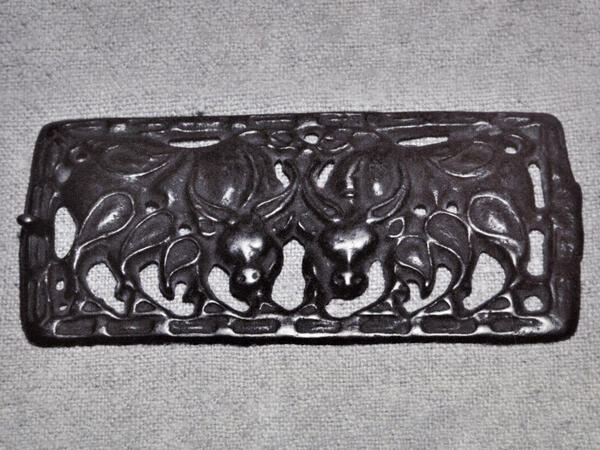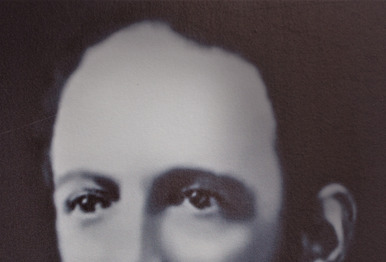The bronze plate with two yaks was found during an archaeological expedition in Minusinsky district (nowadays, the Minusinsky region of Krasnoyarsk Krai). In total, there were 15 similar artifacts discovered in Southern Siberia: 14 were found at the Minusinsky excavation and one was found in the Kuznetsovsky district of the Tomsk province (nowadays, the Tomsk region).
On the bronze plate the two yaks were depicted in an unnatural position. Their heads were lowered down and looked straight, the frontal part of the body faced forward, whereas the rest of the animal’s body was turned sideways. The plate was dated to the 2nd-1st century BC.
Depictions of animals appeared in prehistoric art since the very beginning. But the mass production of objects with zoomorphic elements began only in the Bronze Age. The first bronze items appeared in Southern Siberia at the end of the 5-6th millennium BC.
Scientists have determined that the plate, which is displayed in the Museum collection, was made in the Scytho-Siberian animal style. It was widespread in Siberia during the Bronze and Iron Ages. The masters who worked in this style depicted predators, ungulates, birds and mythical animals in specific poses, for example, a wild cat that was curled up in a ring, a deer that bent its legs and threw its horns on its back, and animals that stood on the tips of their hooves. The masters also recreated complex scenes, for example, persecution and torment scenes. Archaeologists suggest that such images had a sacred meaning, because the plates were often found inside burials.
The artifact was part of the collection of the Local Lore Museum, which was lost during the fires of 1879, when the fire destroyed 75 city blocks, 918 courtyards, 105 stone and 3418 wooden buildings. At that time almost all educational facilities and public institutions in Irkutsk, including the Museum building, were burned down. More than 22 thousand exhibits, an archive and a library were lost in the fire. About 100 objects have been preserved from the pre-fire collection of the Museum, among which is the plate shown in the photo. The original is on display in the historical department of the Museum.
On the bronze plate the two yaks were depicted in an unnatural position. Their heads were lowered down and looked straight, the frontal part of the body faced forward, whereas the rest of the animal’s body was turned sideways. The plate was dated to the 2nd-1st century BC.
Depictions of animals appeared in prehistoric art since the very beginning. But the mass production of objects with zoomorphic elements began only in the Bronze Age. The first bronze items appeared in Southern Siberia at the end of the 5-6th millennium BC.
Scientists have determined that the plate, which is displayed in the Museum collection, was made in the Scytho-Siberian animal style. It was widespread in Siberia during the Bronze and Iron Ages. The masters who worked in this style depicted predators, ungulates, birds and mythical animals in specific poses, for example, a wild cat that was curled up in a ring, a deer that bent its legs and threw its horns on its back, and animals that stood on the tips of their hooves. The masters also recreated complex scenes, for example, persecution and torment scenes. Archaeologists suggest that such images had a sacred meaning, because the plates were often found inside burials.
The artifact was part of the collection of the Local Lore Museum, which was lost during the fires of 1879, when the fire destroyed 75 city blocks, 918 courtyards, 105 stone and 3418 wooden buildings. At that time almost all educational facilities and public institutions in Irkutsk, including the Museum building, were burned down. More than 22 thousand exhibits, an archive and a library were lost in the fire. About 100 objects have been preserved from the pre-fire collection of the Museum, among which is the plate shown in the photo. The original is on display in the historical department of the Museum.



